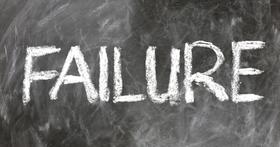For the 2025-26 school year, there are 3 public schools serving 1,071 students in Bald Knob School District. This district's average testing ranking is 5/10, which is in the bottom 50% of public schools in Arkansas.
Public Schools in Bald Knob School District have an average math proficiency score of 39% (versus the Arkansas public school average of 39%), and reading proficiency score of 34% (versus the 40% statewide average).
Minority enrollment is 12% of the student body (majority Hispanic), which is less than the Arkansas public school average of 42% (majority Black).
Overview
This School District
This State (AR)
# Schools
3 Schools
1,108 Schools
# Students
1,071 Students
484,974 Students
# Teachers
101 Teachers
38,770 Teachers
Student-Teacher Ratio
11:1
11:1
Student By Grade
District Rank
Bald Knob School District, which is ranked within the bottom 50% of all 257 school districts in Arkansas (based off of combined math and reading proficiency testing data) for the 2022-2023 school year.
The school district's graduation rate of 87% has decreased from 90-94% over five school years.
Overall District Rank
#142 out of 258 school districts
(Bottom 50%)
(Bottom 50%)
Math Test Scores (% Proficient)
39%
39%
Reading/Language Arts Test Scores (% Proficient)
34%
40%
Science Test Scores (% Proficient)
34%
36%
Graduation Rate
87%
88%
Students by Ethnicity:
Diversity Score
0.22
0.61
% American Indian
n/a
n/a
% Asian
n/a
2%
% Hispanic
5%
15%
% Black
2%
19%
% White
88%
58%
% Hawaiian
n/a
1%
% Two or more races
5%
5%
All Ethnic Groups
District Revenue and Spending
The revenue/student of $13,652 is higher than the state median of $13,136. The school district revenue/student has grown by 11% over four school years.
The school district's spending/student of $12,268 is less than the state median of $13,047. The school district spending/student has grown by 11% over four school years.
Total Revenue
$15 MM
$6,371 MM
Spending
$13 MM
$6,327 MM
Revenue / Student
$13,652
$13,136
Spending / Student
$12,268
$13,047
Best Bald Knob School District Public Schools (2025-26)
School
(Math and Reading Proficiency)
(Math and Reading Proficiency)
Location
Quick Facts
Rank: #11.
H.l. Lubker Elementary School
(Math: 49% | Reading: 35%)
Rank:
Rank:
6/
Top 50%10
103 W Park St
Bald Knob, AR 72010
(501) 724-3714
Bald Knob, AR 72010
(501) 724-3714
Gr: K-5 | 487 students Student-teacher ratio: 15:1 Minority enrollment: 11%
Rank: #22.
Bald Knob Middle School
(Math: 43% | Reading: 32%)
Rank:
Rank:
5/
Bottom 50%10
103 W Park St
Bald Knob, AR 72010
(501) 724-5652
Bald Knob, AR 72010
(501) 724-5652
Gr: 6-8 | 248 students Student-teacher ratio: 13:1 Minority enrollment: 14%
Rank: #33.
Bald Knob High School
(Math: 20-24% | Reading: 35-39%)
Rank:
Rank:
4/
Bottom 50%10
901 N Hickory St
Bald Knob, AR 72010
(501) 724-3843
Bald Knob, AR 72010
(501) 724-3843
Gr: 9-12 | 336 students Student-teacher ratio: 7:1 Minority enrollment: 11%
Frequently Asked Questions
How many schools belong to Bald Knob School District?
Bald Knob School District manages 3 public schools serving 1,071 students.
What is the rank of Bald Knob School District?
Bald Knob School District is ranked #135 out of 257 school districts in Arkansas (bottom 50%) based off of combined math and reading proficiency testing data for the 2022-2023 school year.
What is the racial composition of students in Bald Knob School District?
88% of Bald Knob School District students are White, 5% of students are Hispanic, 5% of students are Two or more races, and 2% of students are Black.
What is the student/teacher ratio of Bald Knob School District?
Bald Knob School District has a student/teacher ratio of 11:1, which is lower than the Arkansas state average of 13:1.
What is Bald Knob School District's spending/student ratio?
The school district's spending/student of $12,268 is less than the state median of $13,047. The school district spending/student has grown by 11% over four school years.
Recent Articles

School Vouchers: Updated Pros and Cons (2025 Review)
Comprehensive 2025 analysis of school vouchers, weighing benefits and challenges for families, funding, outcomes, and policy directions.

Benefits and Drawbacks of Homework in 2025
Explore updated 2025 insights on homework鈥檚 benefits, drawbacks, mental health impact, best practices, and policy trends in U.S. public schools.

Charter Schools vs Public Schools 2025: Key Differences & Trends
Explore updated 2025 insights comparing charter schools vs public schools, enrollment, academic outcomes, funding, and real-world examples for families and educators.





